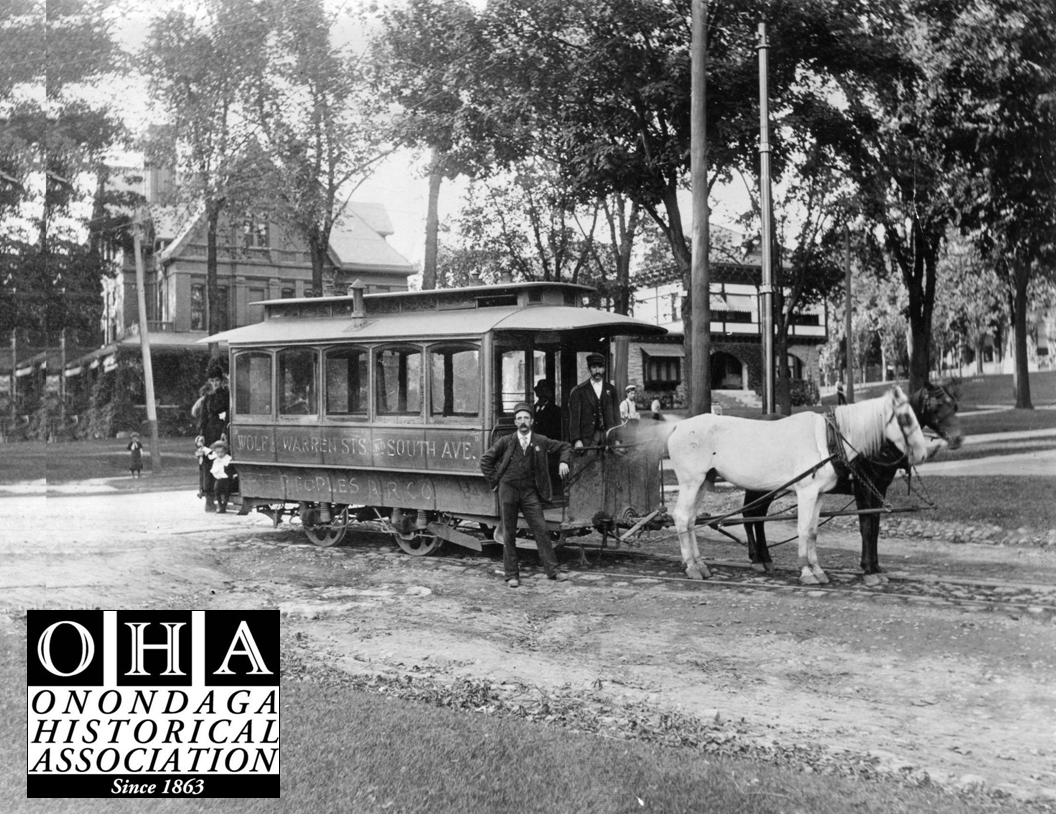
On August 16, 1860, at 8 AM, two horse-drawn passenger cars owned by the Central City Railway emerged from their Wolf St. barn and straight into history. For these two cars, appropriately named Number 1 and Number 2, represented the first modes of urban public transportation in Syracuse, NY.
The small cars, not much longer than a modern automobile, traveled along iron rails, driven by one man who also collected the five-cent fare. The total length of the original track was 1 ½ miles. The open cars were had no lights and were unheated; sometimes straw laid down on the car floor attempted to keep the passengers’ feet warm. During the winters between 1865-1870, Henry Thompson, owner of the Oakwood line that operated on Syracuse’s south side, replaced his wheeled car with a sleigh. In 1869, a horse car line went to the Valley, and by 1870, another line went from Syracuse to Solvay. That same year, Syracuse had accumulated twelve miles of track bisecting the major travel routes – North & South Salina Sts. and East & West Genesee Sts. The city boasted six successful horse car railroad lines that made profits for their investors.
By 1890, People’s Railroad Company took control of both Central City and Syracuse & Onondaga Railway companies, while the Consolidated Street Railway Company absorbed other companies, including the Oakwood line and the Eleventh Ward Streetcar Company. Syracusans became enamored with the horse drawn streetcars and, by 1886, over 5 million riders traveled on the cars. In 1888, the first electric trolley came to Syracuse and commuters were ecstatic with the smoother, faster ride. Horse car companies recognized the improved method of transporting customers and began switching to the electrified system. Over the next twelve years, the horse car system was gradually retired, until, on August 19, 1900, the very last horse car rumbled down the Green Street Line in Syracuse and back to the barn, forty years, almost to the day that the first car emerged to serve the public.


